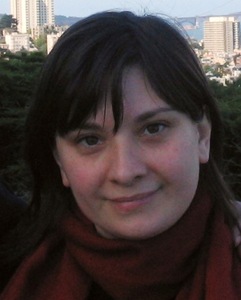|

Ben White
|
|

Monika Ekiert
|
Greetings Fellow ALISers!
Welcome to our second issue of 2015! We hope that, depending on
your side of the equator, you are off to a great start to the fall or
spring.
In this issue, our chair, Nihat Polat, and our chair-elect,
David Olsher, brief us on upcoming special ALIS sessions at TESOL 2016
in Baltimore. You will also find four short articles written by
presenters at TESOL 2015 in Toronto, where there were plenty of
outstanding applied linguistics presentations. The articles come from
presentations that particularly caught our eye, presentations with a
multitude of potential applications to the classroom.
In the first article, “A New Academic Vocabulary List,” Dee
Gardner introduces us to the new Academic Vocabulary List (AVL) and
explains how it differs from the Academic Word List (Coxhead, 2000).
That the AVL is based on lemmas rather than word families and allows for
more precision in identifying exactly which words are the most frequent
in academic discourse. This list and the web interface tool that allows
teachers and researchers (and possibly students) to gain information
about academic and technical words could be a game-changer for the
teaching of English for academic purposes (EAP).
In the next article, “Play and Cognition in the EAP Classroom,”
Snezhana Harizanova encourages us to consider incorporating play into
the classroom. She outlines the cognitive and psychological benefits of
play and challenges instructors to introduce play and playfulness to EAP
contexts.
In “Learning Grammar by Ear,” Elizabeth O’Dowd considers the
context of English language learners (ELLs) in school. She addresses the
grammar deficits often exhibited by ELLs and then demonstrates ways to
help students build their grammar mastery and academic literacy. ESOL
teachers are encouraged to focus students’ attention on the meanings
grammatical patters contribute to academic texts.
Finally, in our last article, “Making Humor Teachable: A Focus
on Micro-Skills Development,” Anne Pomerantz and Nancy Bell argue for
more attention to humor in language instruction. They outline not only why but importantly how to teach
humor. The authors offer insightful suggestions on how instructors can
help learners identify, comprehend, produce, and respond to
humor.
We hope you enjoy the articles and all the other information that can be found in this issue.
Ben and Monika
References
Coxhead, A. (2000). A new academic word list. TESOL
Quarterly, 34, 213–238. | 
